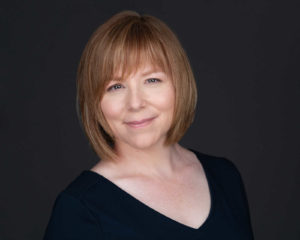 It is likely that each of us has a few behaviours we could change to be truly inclusive. And, behaviour change is not simple. Awareness of what we want to change is challenging and to shift behaviours takes considerable effort and time.
It is likely that each of us has a few behaviours we could change to be truly inclusive. And, behaviour change is not simple. Awareness of what we want to change is challenging and to shift behaviours takes considerable effort and time.
To build an inclusive culture, we must first recognize our own biases and then take conscious actions to shift our automatic responses. We must be accountable to the change for the change to happen.
Recognizing Unconscious Bias
Research shows that we receive millions of ‘bits’ of information every moment of every day but our brains can’t process this volume. Therefore, our brains take automatic shortcuts to sort information and reach conclusions without our awareness. This can lead to quick and inaccurate judgements that give some individuals or groups an advantage and others a disadvantage. Every one of us has biases and they are not always bad. So, how do we recognize the biases that are having a negative impact?
Examine your assumptions. We make assumptions, such as assuming the intent behind a person’s words or actions or anticipating a response to a question or circumstance. It’s important that we gather information to limit our assumptions and ask ourselves why we might have made the assumptions in the first place. If we are honest with ourselves, we may see themes emerge.
Listen to your language. Without even knowing it, our language can change depending on who we are talking to or about. If you are wondering if you do this, ask yourself if you would use the same words if talking to/about a person from another gender, race or other under-represented group. The answer will help make these language choices more conscious.
Recognize your privilege. Life is not equitable for all people. Each of us have a level of privilege in society based on many factors – country of origin, skin color, economic status, family background, gender, etc. This can determine your unconscious biases. It’s important that we understand in what ways we are each privileged so that we can recognize our biases.
Do your homework. One of the supportive things you can do to build inclusion is to learn more about the issues. Stay curious, this will keep your mind open to other perspectives.
“We cannot change what we are not aware of, and once we are aware, we cannot help but change.” – Sheryl Sandberg, Lean In
Active Inclusion
Change takes deliberate action. Becoming aware of our biases is the first step but unless we are willing to look at our behaviours and take action to adjust them, not much will change. Accountability to the change means using tactics to be actively inclusive.
Level the playing field. Inclusion is about equity, not equality. Equality implies sameness, where equity strives for fairness. It’s important to understand that different people need different supports and recognize barriers that exist so they can be removed.
Solicit input. It’s human nature to have our “go to” people. We need to force ourselves outside of our circle to gain new perspectives, which also leads to greater innovation. Ask. Listen. Be curious.
Be an upstander. Much like safety in the work environment – if you see something, say something. As mentioned in my previous blog [link], there are ways you can stand up for yourself or others without being confrontational. Silence is often taken as agreement; we need to break the silence to change culture.
Amplify others. Ever been in a situation where certain individuals dominate the conversation and talk over others? To ensure we hear all perspectives, it’s good practice to engage those who are not as vocal. In situations where someone gets talked over or someone gets credit for another person’s idea, we can amplify their voice by restating what they said or by asking them to complete their thought.
Impact versus intent. It’s important to understand that it’s the impact that matters. Regardless of what our motivation might be, we need to take accountability for the impact of our words and/or actions to be able to make positive changes.
“The most effective way to do it, is to do it.” – Amelia Earhart
Do you have a story to share about diversity and inclusion? We would love to hear them and share them too.
If you have a story you would like to share, send it to corporatecommunications@tolko.com and include your full name and email or phone number so we can contact you before sharing it.
Let’s keep moving forward together.
